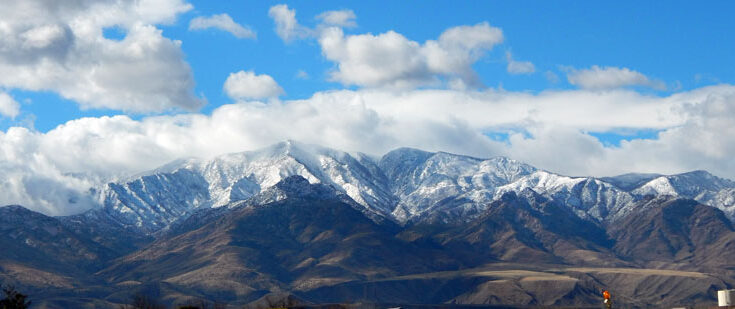Photo By Mike Bibb: Snow covers the upper portion of Mount Graham.
Column By Mike Bibb
Recent winter storms have left a heaping amount of fresh snow on the peaks of Mount Graham.
Occasionally, the white stuff descended as low as the foothills.
My only regret – poorly managed forest fires didn’t leave enough trees to offer better protection and longevity of the valuable natural resource.
Previously, melting snow packs on the mountain would often last until spring, providing runoff to fill reservoirs and assisting in local farm irrigation.
In June 2017, nearly 50,000 acres of charred vegetation and incinerated evergreen carcasses – habitat for various forms of wildlife – were decimated by the incompetent allowance of a lightning strike to grow into an uncontrollable monster.
Instead of extinguishing the small blaze when it was easily possible, for some unfathomable reason decisions were made by a U.S. Forest Service management team to delay an active response.
Similar to a city fire department waiting until half a building has burned to the ground before dispatching a crew and equipment.
Not being a firefighter, I was always under the impression the primary responsibility of a fire department was to put out the fire as quickly as possible in order to prevent additional damage and destruction.
Apparently, I was mistaken.
In the summer of 2017, winds began to pick up and the little blaze erupted into one of the largest wildfires in Arizona history. Smoke, ash, and embers from the Frye Fire inferno filled the sky, sometimes drifting for miles in the atmosphere before falling to the ground.
It will take many decades before this “Sky Island” returns to its former splendor. That is if the USFS and its “Caring for the Land and Serving People” strategy don’t become involved again.
The opinions expressed in this editorial are those of the author.









